A spinal headache, also known as a post-dural puncture headache, is a type of headache that can happen after a lumbar puncture or spinal tap. It is characterized by a throbbing headache that worsens when you sit or stand but improves when you lie down. A spinal headache can be an uncomfortable and challenging experience, affecting up to 40% of people after a lumbar puncture procedure. Various treatment options are available that can help manage and alleviate the symptoms of this kind of headache.
Understanding the causes and symptoms of a spinal headache
A spinal headache can develop after a lumbar puncture or spinal tap. A lumbar puncture is a medical procedure where a needle is inserted into the spinal canal to collect cerebrospinal fluid. This headache occurs when cerebrospinal fluid leaks through the puncture site. The leaking fluid causes pressure to drop in the spinal canal and causes headache and other symptoms. The primary procedures that can cause a spinal headache include:
- Lumbar puncture or spinal tap — A common cause of a spinal headache is a lumbar puncture. A lumbar puncture can be performed for diagnostic or therapeutic purposes.
- Epidural anesthesia — A spinal headache can be a rare side effect of epidural anesthesia. Epidural anesthesia is commonly used during childbirth and can also be used for other medical procedures.
Factors that can contribute to the development of a spinal headache include:
- Needle size — The size of the needle can play a direct factor in developing a spinal headache. If a larger needle is used, the chances of cerebrospinal fluid leaking increases. A larger needle used in the procedure can come with a chance of up to 70% of developing a spinal headache. If a smaller needle is used, the chance can be 12% of developing a spinal headache.
- Needle design — The kind of needle can also play a factor in the risk of developing a spinal headache. If an atraumatic needle that has a diamond-shaped tip is used for the procedure, you have a lower chance of developing a headache.
- Number of attempts — The number of attempts directly relates to the amount of damage in the spinal canal. If a larger needle or multiple attempts are required, the damage to the spinal canal will leave a more significant chance of spinal fluid leaking into the canal, which can lead to the development of a headache.
Symptoms of a spinal headache can include:
- Throbbing headache — A spinal headache causes a distinctive throbbing or pulsating headache.
- Worsening pain when upright — The pain from this type of headache usually intensifies when you sit or stand up. The pain typically lessens when you are lying down.
- Neck stiffness — Some people can experience neck stiffness and pain in addition to a throbbing headache.
- Nausea and vomiting — In severe cases of spinal headaches, you may also experience nausea and vomiting.
Treatment options for a spinal headache
Spinal headaches typically go away on their own. If a headache requires treatment, several options can help to get you back to your normal routine. Treatment options can include:
- Hydration — Increasing your fluid intake is important to help boost your cerebral spinal fluid pressure. In cases of severe dehydration, you may be given an IV hydration boost to rehydrate you quickly.
- Caffeine — Your doctor may suggest you have a caffeine-rich drink. Caffeine can help narrow the blood vessels and reduce cerebral blood flow. This can help provide you with pain relief.
- Rest — It’s crucial to take it easy and allow your body to rest. Your health care provider may recommend bed rest for a day or two. This will allow your body to heal.
- Medication — Over-the-counter pain relievers and medications designed to help with headaches can be taken to help alleviate the symptoms of a spinal headache. Your health care provider may also prescribe stronger medications to help manage more severe headache symptoms.
- Blood patch — In cases where a spinal headache doesn’t resolve on its own or with the help of other conservative measures, your health care provider may recommend a blood patch. A blood patch uses your blood to create the patch. An anesthesiologist will inject your blood into the epidural space where the cerebral spinal fluid is leaking. The blood will help close the leaky hole that is responsible for the headache and provide you with relief from the pain.
Physical therapy after a spinal headache
After you’ve recovered from a spinal headache, it’s time to reclaim your strength, and physical therapy can help. Physical therapy can help through:
- Gradual reintroduction to activity — A physical therapist understands the importance of pacing yourself, especially after a lumbar puncture and spinal headache recovery. They can guide you through a step-by-step return to your regular activities.
- Gentle exercise regimen — Customized exercises will be introduced to help rebuild your strength and flexibility. These exercises can help ease you back into an active routine.
- Posture and body mechanics — Your therapist can teach you about proper posture and body mechanics to help reduce the strain on your spine. This knowledge can be beneficial in maintaining spinal health.
SSOR can help you on your recovery journey from a spinal headache
Recovering from a spinal headache caused by a lumbar puncture or epidural anesthesia involves a gradual and personalized approach. Our team at SSOR can help address any lingering discomfort, restore your mobility, and help support your overall spinal health and well-being. The attentive guidance of our skilled physical therapy team will ensure that you receive personalized and compassionate treatment during your rehabilitation journey. We can help you overcome the challenges associated with spinal headaches.
Call us or request an appointment today to learn your treatment options for a spinal headache.

